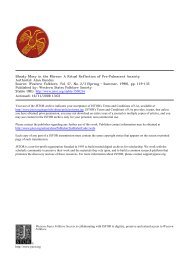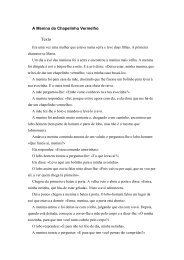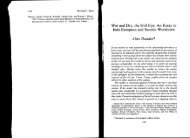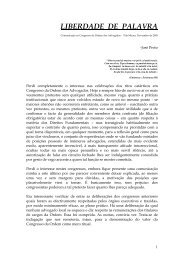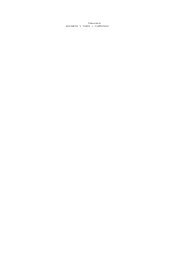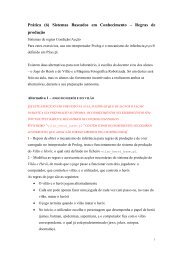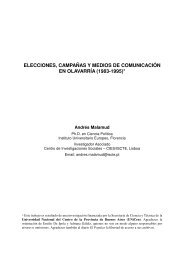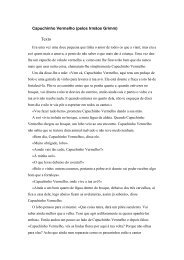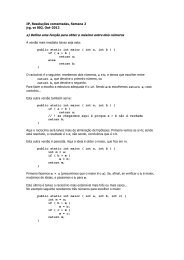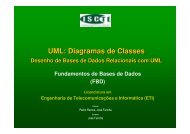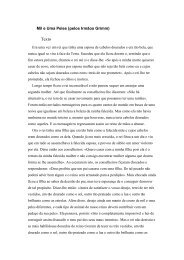Caderno 1 : Domínios de Definição, Limites e Continuidade
Caderno 1 : Domínios de Definição, Limites e Continuidade
Caderno 1 : Domínios de Definição, Limites e Continuidade
Create successful ePaper yourself
Turn your PDF publications into a flip-book with our unique Google optimized e-Paper software.
12 CAPÍTULO 2. LIMITES E CONTINUIDADE<br />
• <strong>Definição</strong>: Uma função f : Df ⊆ R 2 −→ R é <strong>de</strong>scontínua no ponto (a, b) (ponto <strong>de</strong><br />
acumulação <strong>de</strong> Df) sef não é contínua em (a, b), nem prolongável por continuida<strong>de</strong><br />
ao ponto (a, b) .<br />
• <strong>Definição</strong>: Uma função f : Df ⊆ R 2 −→ R diz-se contínua no seu domínio Df ⊆<br />
R 2 , se fôr contínua em todos os pontos <strong>de</strong>sse domínio.<br />
2.2 Exercícios Propostos<br />
1. Seja a função<br />
Calcule, se existirem:<br />
⎧<br />
⎪⎨<br />
f (x) =<br />
⎪⎩<br />
1<br />
x +1<br />
, x ≤ 0<br />
e −x , x > 0<br />
(a) limx→1 f (x);limx→−1 f (x); limx→0 f (x); limx→+∞ f (x); limx→−∞ f (x)<br />
2. Seja a função: f (x, y) =<br />
3. Consi<strong>de</strong>re a seguinte função<br />
⎧<br />
⎪⎨<br />
f (x, y) =<br />
⎪⎩<br />
x + y<br />
. Calcule o seu limite no ponto (1, 2) .<br />
6x − y2 x 2 y<br />
y + x sin x<br />
Calcule o seu limite na origem dos eixos.<br />
, (x, y) :y 6= −x sin x<br />
1 , (x, y) :y = −x sin x<br />
4. Seja a função<br />
⎧<br />
xy<br />
⎪⎨ p<br />
x2 + y2 f (x, y) =<br />
⎪⎩<br />
1<br />
,<br />
,<br />
(x, y) 6= (0, 0)<br />
(x, y) =(0, 0)<br />
Estu<strong>de</strong> o seu limite na origem dos eixos.<br />
5. Provar pela <strong>de</strong>finição que lim (x,y)→(0,0) f (x, y) 6= 0, para a função<br />
xy<br />
f (x, y) = q<br />
(x2 + y2 ) 3



